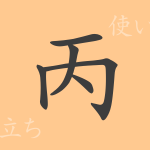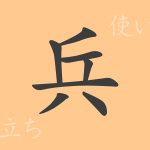The kanji (Chinese character) deeply rooted in Japanese culture and language each carry their own meanings and histories. The kanji “平” (hei) is a character we frequently encounter in our daily lives, but have you ever considered its origins and diverse usages? In this article, we delve into the allure of “平” (hei), exploring its etymology, compound words, and idiomatic expressions.
Origins of 平 (hei)
The origins of the kanji “平” (hei) are ancient, evolving from pictographs. Originally, it combined “巾” (kin), meaning flat land, with “干” (kan), depicting the act of smoothing with a hand. This combination gave rise to the meaning “to make flat,” which later extended to concepts such as peace and equality.
Meanings and Usages of 平 (hei)
The kanji “平” (hei) carries meanings such as “flat,” “peaceful,” and “equal.” It is also used to describe a stable state or a calm, undisturbed condition. As a versatile character, it functions as an adjective, noun, and prefix, playing a significant role in various contexts within the Japanese language.
Readings, Stroke Count, and Radical of 平 (hei)
The basic information about the kanji “平” (hei) is as follows:
- Readings: On’yomi (音読み) readings are “ヘイ” (hei) and “ビョウ” (byou), while Kun’yomi (訓読み) readings include “たい.ら” (tai.ra) and “ひら” (hira)
- Stroke count: 5 strokes
- Radical: 干 (kan)
Compound Words, Idiomatic Expressions, and Proverbs Using 平 (hei)
There are numerous compound words, idiomatic expressions, and proverbs that include “平” (hei), each reflecting the richness of the Japanese language. For example, “平和” (hei wa) signifies a state of peace without conflict, while “平穏無事” (hei on bu ji) means a stable condition without any problems. The expression “平たい顔をする” (hira tai kao wo suru) refers to maintaining a calm facade without showing emotions, and “平身低頭” (hei shin tei tou) means to approach with a humble attitude. These words reflect Japanese sentiments and societal views, offering insights into the cultural background.
Conclusion on 平 (hei)
Exploring the meanings and histories embedded in each kanji character leads to a deeper understanding of the Japanese language. The character “平” (hei), with its simple form, encompasses a surprising range of meanings and usages. By glimpsing into the world of “平” (hei), used extensively from everyday conversation to literary works and historical contexts, one can touch upon the culture and values underlying the language.

























